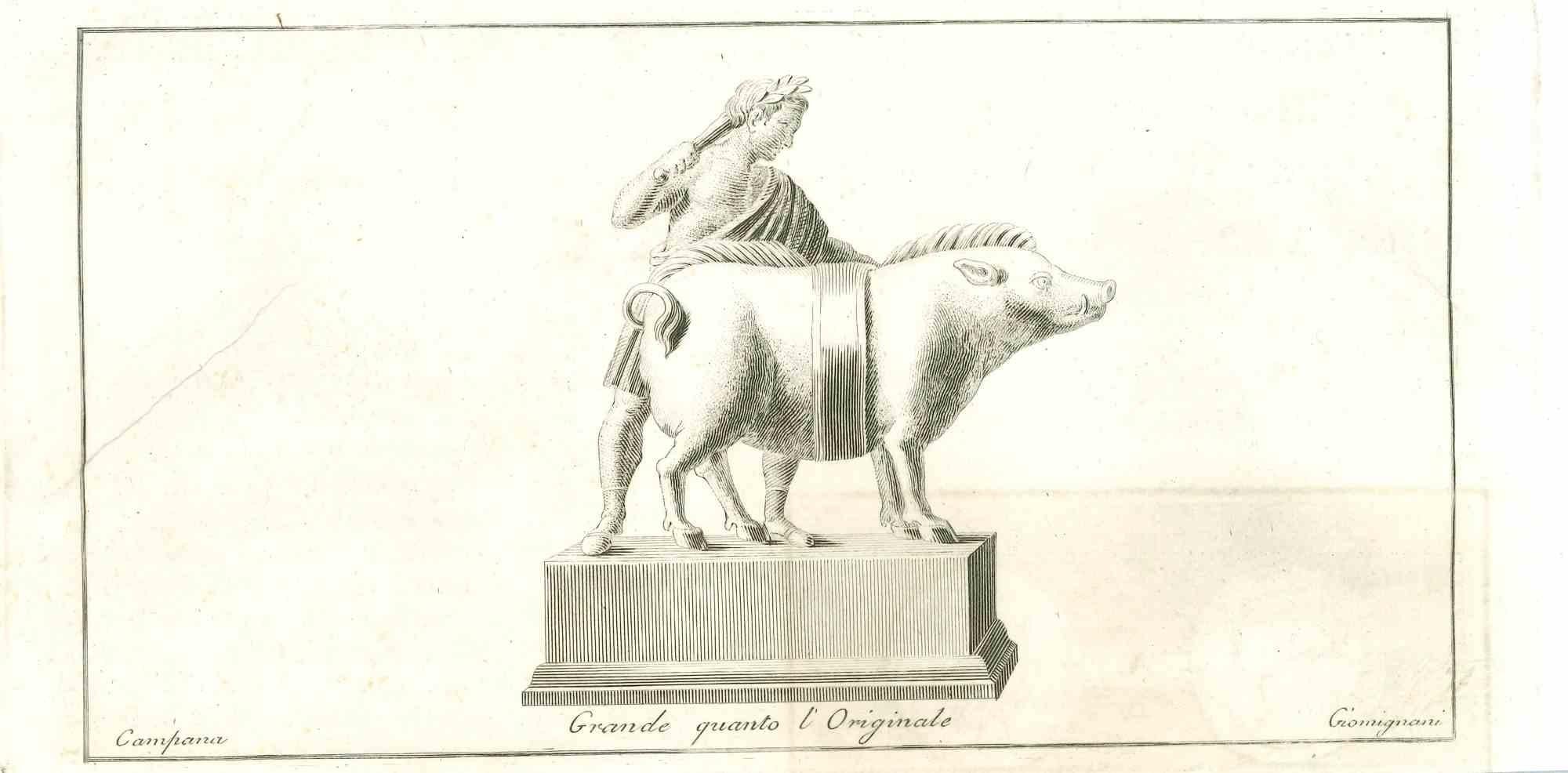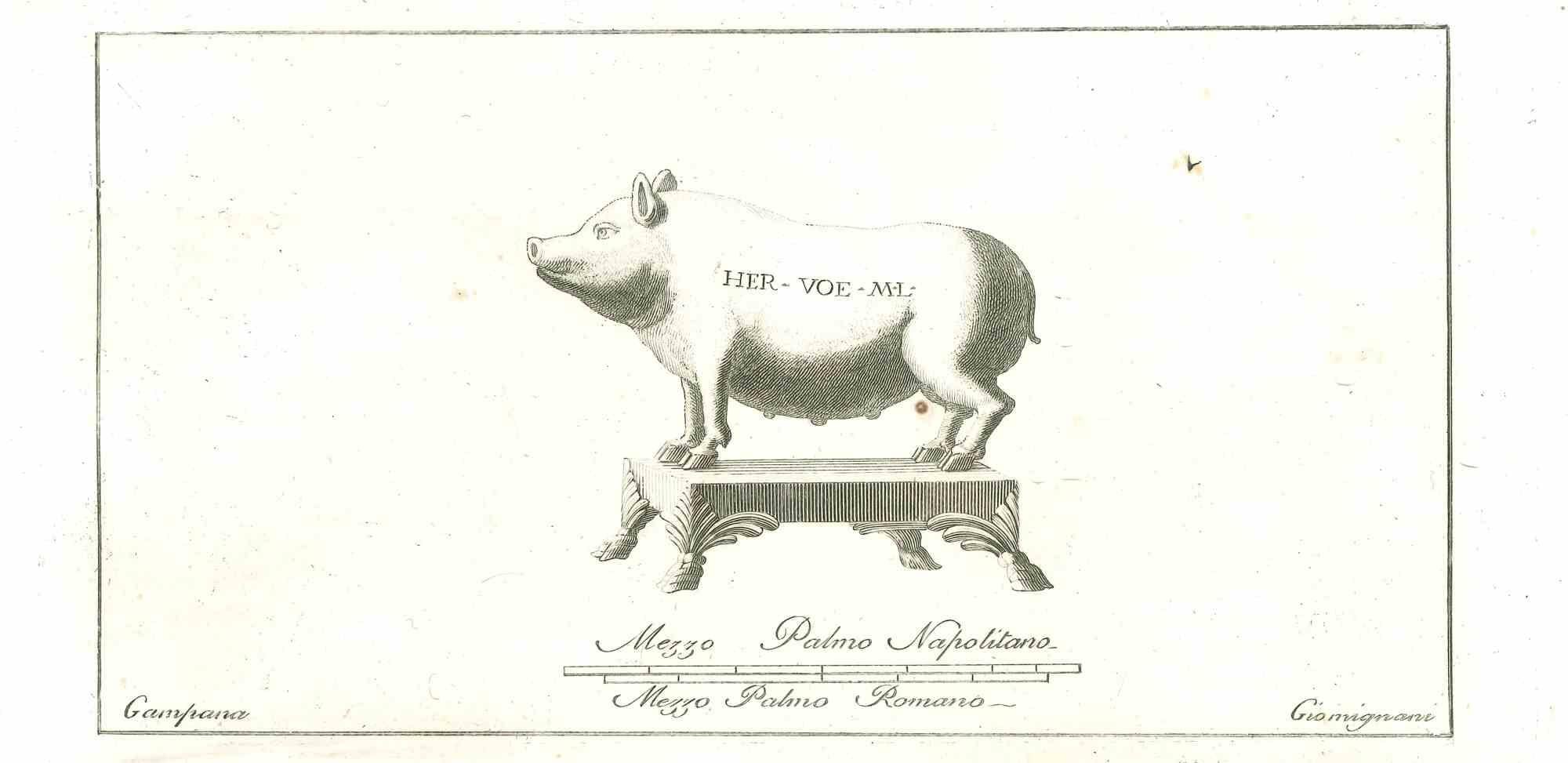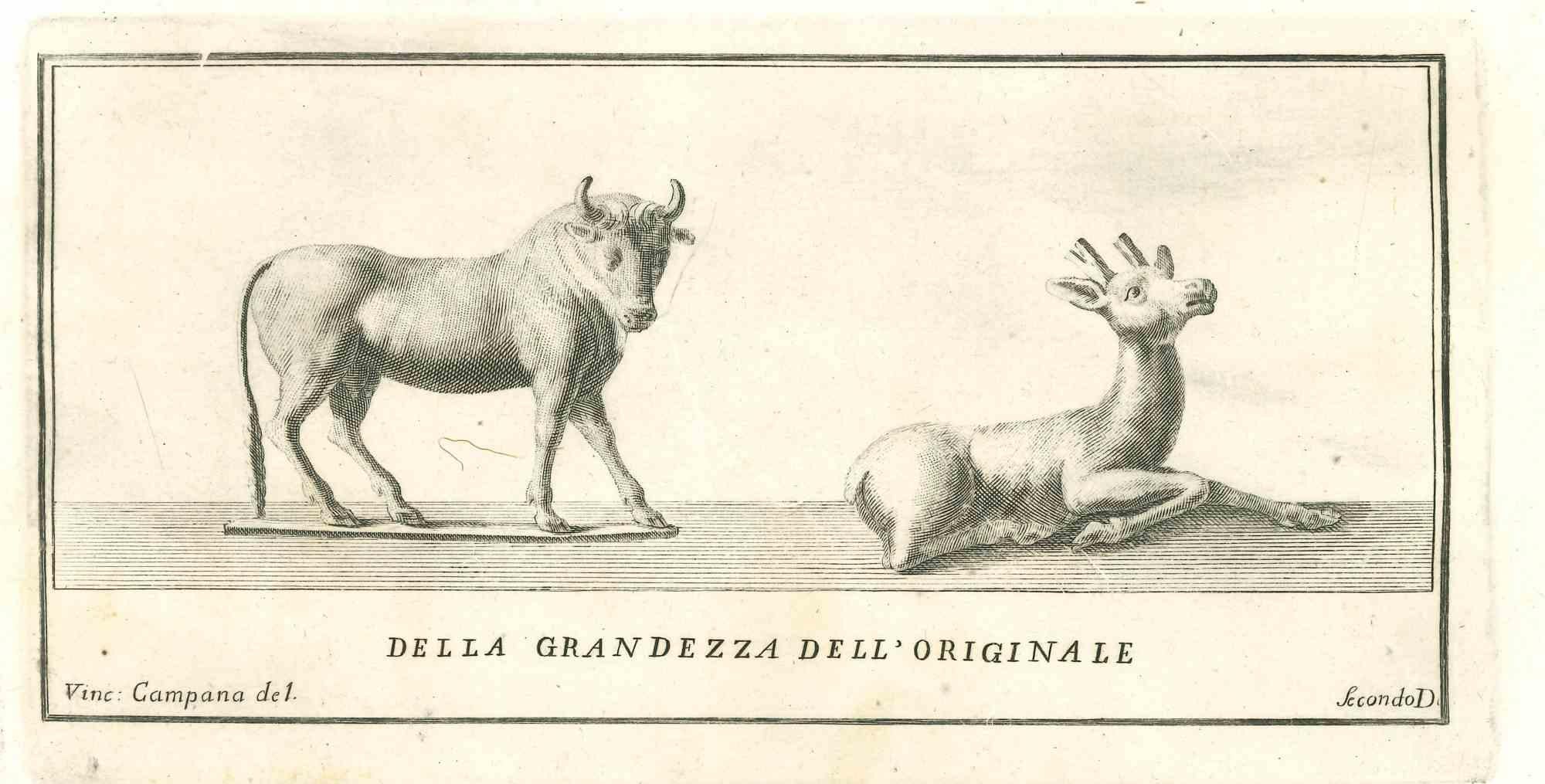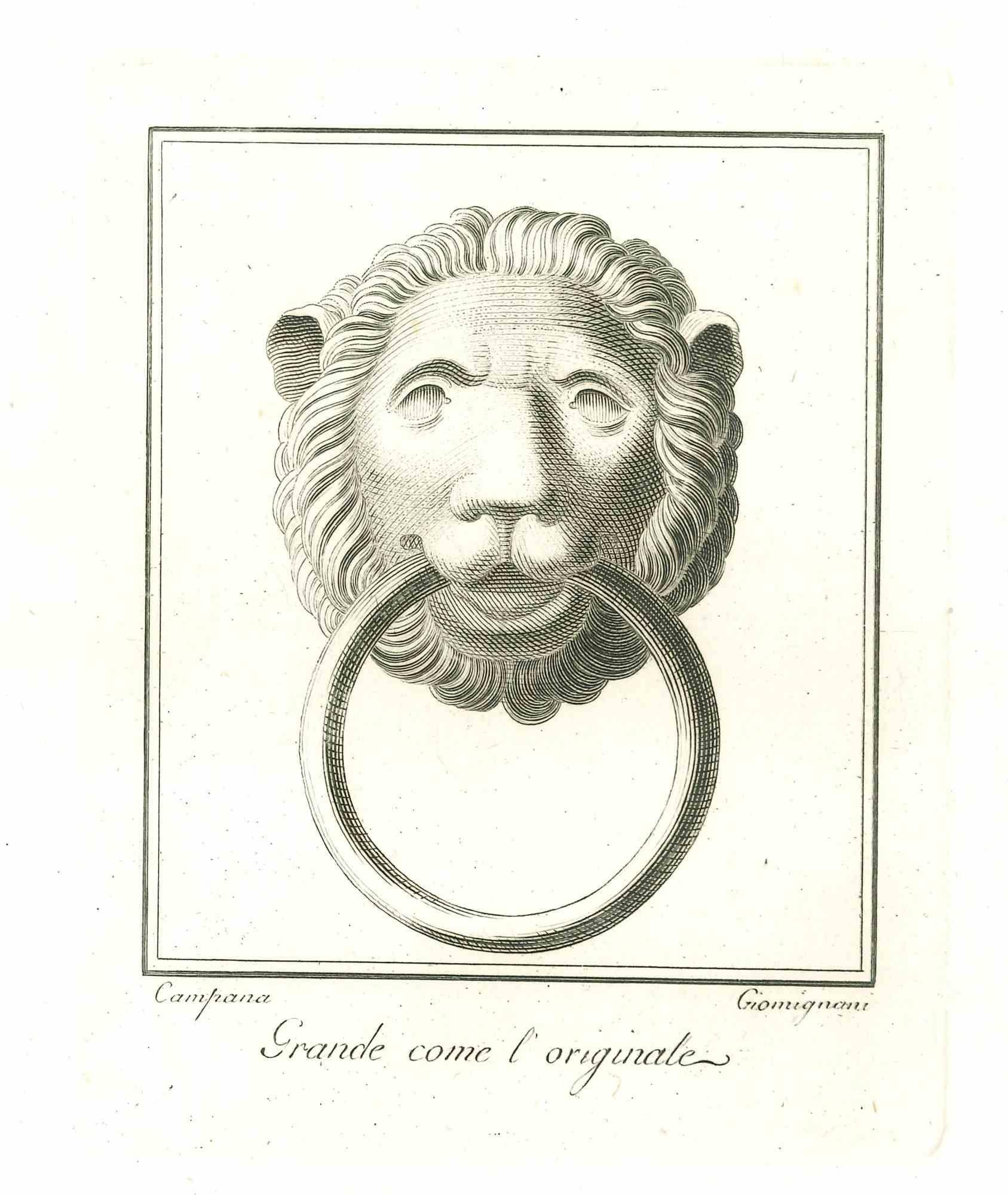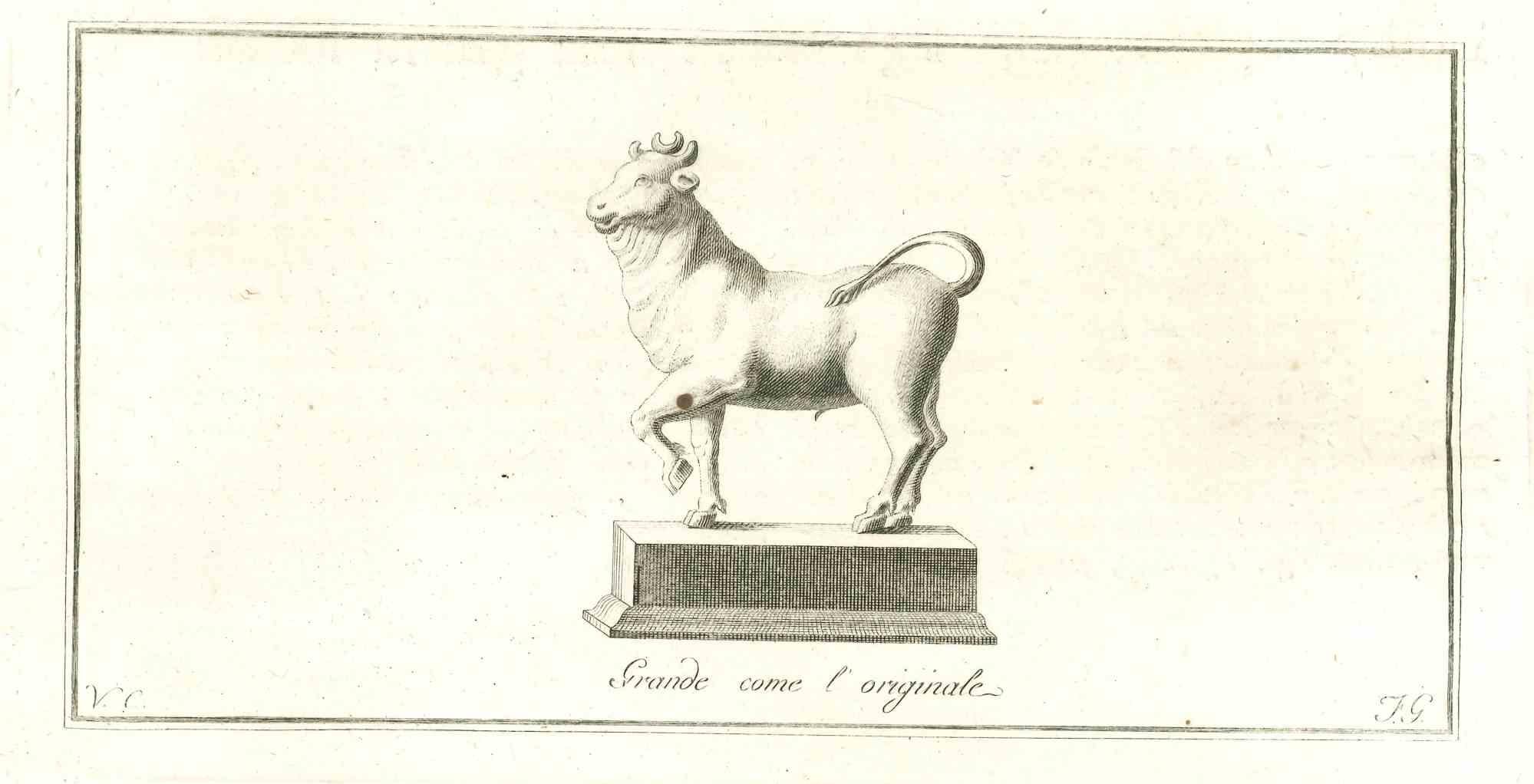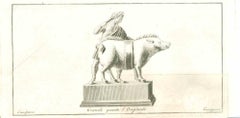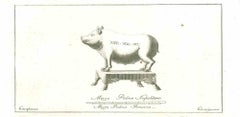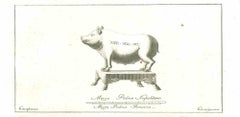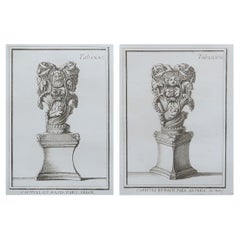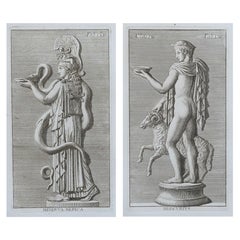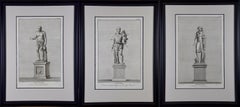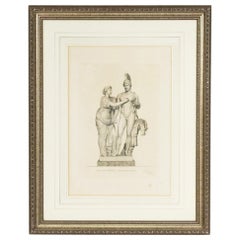Items Similar to Ancient Roman Bas-Reliefs - Original Etching by Vincenzo Campana - 18th Century
Want more images or videos?
Request additional images or videos from the seller
1 of 2
Vincenzo CampanaAncient Roman Bas-Reliefs - Original Etching by Vincenzo Campana - 18th CenturyLate 18th Century
Late 18th Century
$180.38
$240.5125% Off
£131.30
£175.0725% Off
€150
€20025% Off
CA$245.52
CA$327.3625% Off
A$274.63
A$366.1725% Off
CHF 142.92
CHF 190.5625% Off
MX$3,380.79
MX$4,507.7225% Off
NOK 1,818.23
NOK 2,424.3125% Off
SEK 1,705.86
SEK 2,274.4825% Off
DKK 1,141.53
DKK 1,522.0425% Off
Shipping
Retrieving quote...The 1stDibs Promise:
Authenticity Guarantee,
Money-Back Guarantee,
24-Hour Cancellation
About the Item
Ancient Roman Bas-Relief, from the series "Antiquities of Herculaneum", is an original etching on paper realized by Vincenzo Campana in the 18th century.
Signed on the plate on the lower left.
Good conditions but aged.
The etching belongs to the print suite “Antiquities of Herculaneum Exposed” (original title: “Le Antichità di Ercolano Esposte”), an eight-volume volume of engravings of the finds from the excavation of the ruins of Herculaneum in the Kingdom of Naples (now Campania, Italy).
It was published between 1757 and 1792 by the Regia Stamperia, and copies were delivered to selected recipients across Europe.
Despite the title, the Antiquity of Herculaneum shows objects from all the excavations undertaken by the Bourbons in the Gulf of Naples. These include Pompeii, Stabia and two sites of Herculaneum: Resina and Portici.
The Bourbon King Carlo appointed fifteen scholars creating a new “Herculaneum Academy” to study the artifacts and publish the results of the archaeological excavations of the sites.
The engravings are of high quality and the accompanying text shows a large scholarship.
They were realized by 25 prominent artists involved by the King to prepare drawings and engravings on the finds, among which we can find Giovanni Elia Morghen, Carlo Nolli, Luigi Vanvitelli and Giovanni Battista Casanova.
The “Antiquities” was designed more to amaze readers with the quality of the objects in the collection of the King of Naples than to be used in research., following and increasing the interest of 18th century society for the classical culture and Art in particular.
Through the exaltation of the classical concept of proportions and harmony, the book was of inspiration to the neoclassical movement in Europe, giving artists and decorators access to a huge shop of Hellenistic motifs.
Ref.:
National Gallery (Washington), Mark J. Millard Architectural, IV (2000), no. 1;
L. Garcia y Garcia, Nova bibliotheca pompeiana (2 v., 1998);
Royal Institute of British Architects, British Architectural Library ... Early printed books, 1 (1994), no. 112.
U. Pannuti, 'Incisori e disegnatori della Stamperia Reale di Napoli nel secolo XVIII: la pubblicazione delle Antichità di Ercolano', in Xenia antiqua, 9 (2000), p. 151-178;
V. Trombetta, 'L'edizione de Le Antichità di Ercolano esposte' in Rendiconti dell'Accademia di Archeologia, lettere e belle arti di Napoli , 59 (1984), p.151-172.
- Creator:
- Creation Year:Late 18th Century
- Dimensions:Height: 4.73 in (12 cm)Width: 10.24 in (26 cm)Depth: 0.08 in (2 mm)
- Medium:
- Movement & Style:
- Period:
- Framing:Framing Options Available
- Condition:Insurance may be requested by customers as additional service, contact us for more information.
- Gallery Location:Roma, IT
- Reference Number:Seller: T-1260931stDibs: LU65039301732
About the Seller
4.9
Platinum Seller
Premium sellers with a 4.7+ rating and 24-hour response times
1stDibs seller since 2017
7,571 sales on 1stDibs
Typical response time: 2 hours
- ShippingRetrieving quote...Shipping from: Monaco, Monaco
- Return Policy
Authenticity Guarantee
In the unlikely event there’s an issue with an item’s authenticity, contact us within 1 year for a full refund. DetailsMoney-Back Guarantee
If your item is not as described, is damaged in transit, or does not arrive, contact us within 7 days for a full refund. Details24-Hour Cancellation
You have a 24-hour grace period in which to reconsider your purchase, with no questions asked.Vetted Professional Sellers
Our world-class sellers must adhere to strict standards for service and quality, maintaining the integrity of our listings.Price-Match Guarantee
If you find that a seller listed the same item for a lower price elsewhere, we’ll match it.Trusted Global Delivery
Our best-in-class carrier network provides specialized shipping options worldwide, including custom delivery.More From This Seller
View AllAncient Roman Statue - Original Etching by Vincenzo Campana - 18th Century
By Vincenzo Campana
Located in Roma, IT
Ancient Roman Statue, from the series "Antiquities of Herculaneum", is an original etching on paper realized by Vincenzo Campana in the 18th Century.
Signed on the plate on the lower...
Category
Late 18th Century Old Masters Figurative Prints
Materials
Etching
Ancient Roman Bas-Relief - Original Etching by Vincenzo Campana - 18th Century
By Vincenzo Campana
Located in Roma, IT
Ancient Roman Bas-Relief, from the series "Antiquities of Herculaneum", is an original etching on paper realized by Vincenzo Campana in the 18th century.
Signed on the plate on the ...
Category
Late 18th Century Old Masters Figurative Prints
Materials
Etching
Ancient Roman Relief - Original Etching by Vincenzo Campana - 18th Century
By Vincenzo Campana
Located in Roma, IT
Ancient Roman Relief, from the series "Antiquities of Herculaneum", is an original etching on paper realized by Vincenzo Campana in the 18th century.
Signed on the plate on the lowe...
Category
Late 18th Century Old Masters Figurative Prints
Materials
Etching
Ancient Roman Statues - Original Etching by Vincenzo Campana - 18th Century
By Vincenzo Campana
Located in Roma, IT
Ancient Roman Statues, from the series "Antiquities of Herculaneum", is an original etching on paper realized from a design by Vincenzo Campana in the 18th century.
Signed on the pl...
Category
18th Century Modern Figurative Prints
Materials
Etching
Ancient Roman Bas-Relief - Original Etching by Vincenzo Campana - 18th Century
By Vincenzo Campana
Located in Roma, IT
Ancient Roman Bas-Relief, from the series "Antiquities of Herculaneum", is an original etching on paper realized by Vincenzo Campana in the 18th century.
Signed on the plate on the l...
Category
Late 18th Century Old Masters Figurative Prints
Materials
Etching
Ancient Roman Statue - Original Etching by Vincenzo Campana - 18th Century
By Vincenzo Campana
Located in Roma, IT
Ancient Roman Statue, from the series "Antiquities of Herculaneum", is an original etching on paper realized by Vincenzo Campana in the 18th century.
Signed on the plate on the lowe...
Category
Late 18th Century Old Masters Figurative Prints
Materials
Etching
You May Also Like
Large Scale Original Antique Grand Tour Prints-Relief Carvings. Rome, 1776
Located in St Annes, Lancashire
Wonderful images of Relief Carvings
Copper-plate engravings
Published by Monaldini, Rome, 1776
Good quality wove paper
Free shipping
Category
Antique 1770s Italian Classical Roman Prints
Materials
Plaster
Large Scale Original Antique Grand Tour Prints- Statues. Rome, 1776
Located in St Annes, Lancashire
Wonderful images of classical Roman statues-Minerva and Mercury
Copper-plate engravings
Published by Monaldini, Rome, 1776
Good quality wove paper
Free shipping
Category
Antique 1770s Italian Classical Roman Prints
Materials
Plaster
Ancient Roman Statues in the Vatican: A Grouping of Three 18th C. Engravings
By Vincenzo Dolcibene
Located in Alamo, CA
A grouping of three antique engravings depicting statues found in the Vatican, including: "Pescatore" (Fisherman), "Pastore" and "Istrione", "Gia nella Villa Mattei" (Found in the Vi...
Category
1780s Old Masters Still-life Prints
Materials
Engraving
Italian Neo-Classic Engravings of Roman Themes
Located in Queens, NY
5 Italian (19th Cent) Neo-classic engravings depicting Roman statuary/mythological themes framed in silverleaf moulding with matting (PRICED EACH)
Category
Antique 19th Century Italian Neoclassical Paintings
Materials
Silver
Old Master French Noblemen Engraving by Crispin de Passe
By Crispin De Passe
Located in New York, NY
Crispin van de Passe The Younger (c. 1594-1670)
Untitled (French Noblemen on Horseback), c. 1620-1660
Engraving
Sight: 11 3/4 x 15 3/4 in.
Framed: 18 3/4 x 22 5/8 in.
Inscribed in p...
Category
17th Century Old Masters Portrait Prints
Materials
Engraving
Classical Roman vase, early 19th century Italian Grand Tour engraving, c1820
By Carlos Antonini
Located in Melbourne, Victoria
Italian Neoclassical engraving depicting the Roman bronze and marble vases in collections of antiquities in Rome. Circa 1820.
175mm by 130mm (platemark) 330mm by 215mm (sheet size)
Category
Early 19th Century Renaissance More Prints
Materials
Engraving
